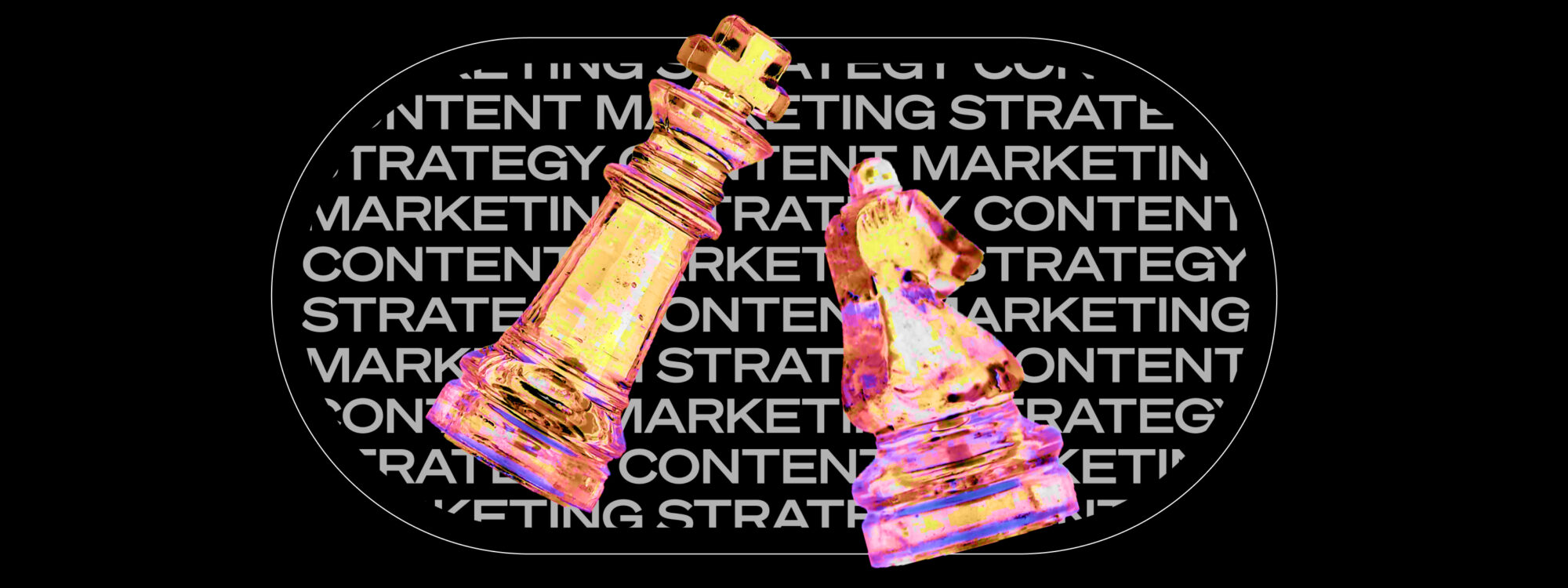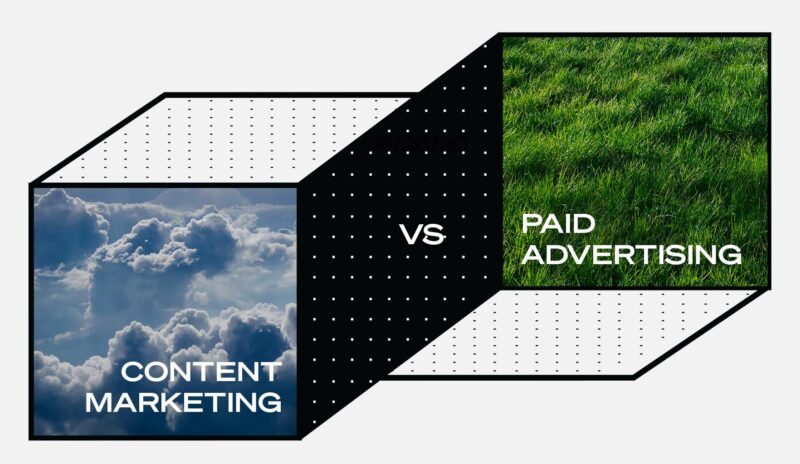Elements Of Content Marketing Strategy
Related Services
Credits
Writer: Dejan Kvrgic

Investing in content is always worth the effort, but it involves much more than merely creating content.
You need a strong, clearly defined strategy and a well-thought-out vision of what your brand or company represents and what kind of customers you want to attract. A strong content marketing strategy can be a real game-changer for your business. Whether you’re starting this from scratch or merely looking for ways to freshen up your content marketing strategy, we have you covered. Today, we’ll go over the pillars of content marketing strategy with you.
Let’s get started!
Ideal Customer Persona
Creating the right content for the right people – that’s the main idea here. But how can you know if you’re targeting the right audience if you didn’t take the time to establish who that audience is? So, before you can outline your content marketing strategy, you need to get a clearer picture of who your audience is. Knowing your ideal client personas helps you determine who you’re creating your content for and allows you to define their main pain points, goals, interests, values, and other demographics.
Marketing and advertising are designed to reach individuals, whether a part of a large group for a consumer brand or a smaller group with particular demographic or behavioral characteristics. Create cheat sheet summaries for campaign usage or to deliver to customer-facing personnel, based on the individuals and personality profiles you want to reach and impact, backed up by research and data you’ve gathered.
These can include factors such as:
- Age
- Gender
- Job
- Household income
- Education
- Location
- Family status
- Personal values and goals
- Cultural influences
- Consumer needs
- Media preferences
Besides these, more valuable data can be collected from factors like:
- Hobbies and interests
- Political preferences and/or activity
- Activities within certain communities, etc.
Try to prioritize finding a unique insight of target consumers that the rest of the industry ignores or undervalues. You’ll find that it’ll frequently act as the creative spark behind a good content strategy or campaign approach. That is precisely what we achieved in one of our highly successful projects where we managed to identify the target audience and create content that speaks directly to them, resulting in incredible feedback.
Brand Identity Guidelines
Your brand’s identity should be at the very core of your strategy. But when you have multiple people working on the same thing and speaking on behalf of your brand, you need to ensure that they’re all on the same page, sending out a consistent message and communicating your brand’s values successfully. And that’s where your brand identity guidelines play a crucial role.
Your brand’s material should have a consistent voice and tone that appeals to your target audience and adds to the overall consistency of your business. It’s time to rethink your ad content, blog posts, and website pages if they all sound like separate people created them. Get together with your team to figure out how to best establish your brand’s voice and tone to appeal to your target demographic. Is it better to be more casual or formal? Is it more witty or more direct? You can even create a brand style guide to ensure that everyone in your firm is on the same page.
Goals & Objectives
Okay, this bit should be obvious, but what are you hoping to achieve? What will be your key performance indicators (KPIs), and how will you measure your short and long-term success? Your content marketing activities should have various key performance indicators (KPIs) and targets depending on your business demands. You should probably go one step further and establish relevant metrics for various content categories. These could fall under one of the following categories:
- Content for performance marketing
- Content on brand awareness, consideration, and/or customer perception
- Communication and support content for the local market
Determine which of these objectives are critical to the short and long-term performance of your content and make them the analytics cornerstones you can track in a reporting platform or dashboard.
Depending on your particular organization, you may have a variety of objectives in mind for content marketing, like:
- Lead generation
- Increase in the organic traffic and website visitors
- Using SEO-optimized content to promote your website
- After-sale assistance
- Creating and attracting interest groups for retargeting ads
- Increased brand recognition, etc.
These are just a handful of the business objectives you could set for your content marketing plan. Once you’ve done that, you’ll be able to pinpoint what kind of material you need to concentrate on. For example, if establishing brand authority is a top priority, you’ll want to generate instructional and relevant content that illustrates your company’s sector expertise.
Market Research & Data
Customer insight and comprehension are built on the foundations of research and data. This can be existing information (website traffic demographics, sales statistics, surveys, studies, customer feedback, etc.), original research, or third-party data. You’ll want to use a combination of all three in most circumstances. Social listening and third-party sources provide some of the most valuable and unbiased research, which can be augmented with interviews and internal analytics.
Customer Journey Map
A journey map emphasizes your consumers’ unique demands and how you can address them. A good journey map depicts a potential customer’s trip through their world and interactions with your brand from their point of view. Customer journey maps can be fashioned after a standard marketing funnel, but they aren’t always linear, adding overlays and new dimensions to the traditional path-to-purchase model. A consumer can hop from one stage to the next based on a variety of reasons and triggers, and they can also interact with some of your channels and touchpoints while completely ignoring others.
Content-Market Fit
From a content marketing standpoint, to spot gaps and opportunities, understanding the existing state of content in your sector it’s just as crucial to understanding your consumer.
There are a few essential questions that need to be answered:
- What value can your content provide?
- How would that content relate to your brand, goods, and consumer value proposition?
- What kind of material will customers be interested in?
It’s also crucial to keep an eye on media behavior and content consumption patterns, such as device usage and visual trends. It can be enticing to throw your hat in the ring across textual, photo, and video on a variety of different content platforms. However, doing a few things well rather than trying to be everywhere is often preferable (and more resource-efficient). Determine which 2-3 content kinds will be your core focus. For example, you can choose Instagram stories and blog articles. Repurpose portions of that material to create new posts on other platforms. Podcasts can be audio from films you’ve made, and microsites can house all of your material organized by campaign or theme, for example. The trick is to find a way to stand out from the crowd and provide value to the discourse.
Resource And Capabilities Assessment
“Content marketing” has a defining problem – we don’t know how to define it precisely, but we do know that we can’t market without it. Because of this lack of clarity, marketing firms are frequently left spinning their wheels and wasting valuable resources, confused about what is in scope and what is not. Finding content-market fit allows you to narrow your focus and discover the best resource mix for executing and funding your activities.Consider and respond to the following questions once you’ve determined the type of material you need to excel at:
- How much money do you have set aside for content and creativity?
- How will the distribution (or buying influence) be split between production and development?
- What method will you use to create your content? In-house? Using agencies and/or freelancers on the outside? Hybrid model (internal and external components)? Or will the majority of the content be created by customers or members of the community?
- What kind of creative expertise do you need on a certain team?
- What processes and technologies are required to put your strategy into action?
To further refine and focus your plan, do a comprehensive inventory of your resources (finance, people, teams, agencies, capabilities, and tech).
Process
Every successful content strategy requires an iterative workflow or process that allows your team to focus on what matters most – creativity, which is subsequently translated into compelling content.
Consider the following while creating a content marketing machine:
- Categorize your stuff into using understandable hierarchy.
- Create a “best practices” workflow for each category of essential material.
- Consider where each content type starts, who is in charge of the business requirements, when and where resources must be turned on/off, how each stage is measured, and who is responsible for the final output.
- Meet with stakeholders and team members to determine whether your ‘best case‘ process is feasible and, more importantly, appropriate for them. Is everyone sure that this is the most effective approach to work? Is there anything else that you haven’t considered?
- Make a written record of your new procedure. Make sure to document it and begin training your crew.
All that’s left to do is put your new procedure to the test. Is it effective? What are the voids? Where are the stumbling blocks?
Internal Communications Plan
Communicate your content plan and operating guidelines to your stakeholders and constituents once you’ve finalized your goals, schedule, and resources to make them a reality.
Try to bring in various perspectives – your communications manager, product marketing, customer marketing, and senior marketing management – and ensure they’re aligned with your strategy.
Final Word
If you know the right steps to take, creating a fantastic content marketing strategy isn’t that difficult. You’ll be off to a terrific start if you follow the advice and approaches listed above. Once you’ve mastered these key components, you’ll be able to run a highly effective and well-organized content marketing campaign, and you’ll be able to see the results of your content marketing campaign in no time!
Get in touch with Pastilla – or learn more about our branding services here. Let’s chat about how our team can assist you in establishing consistency across your brand.


